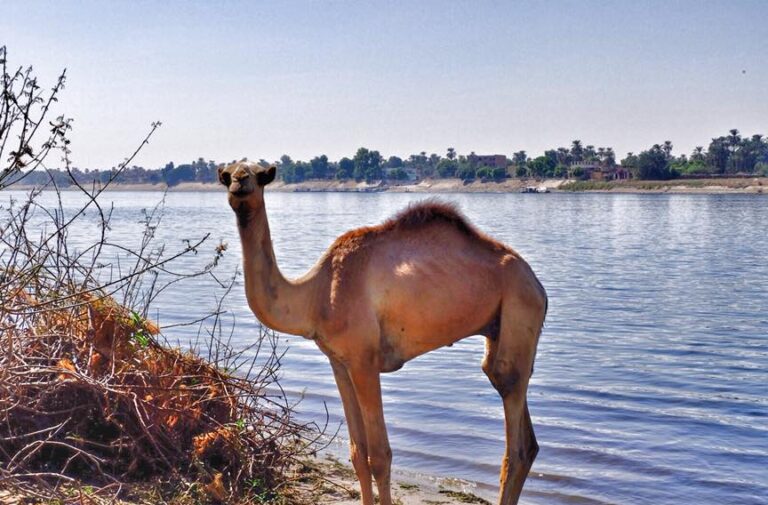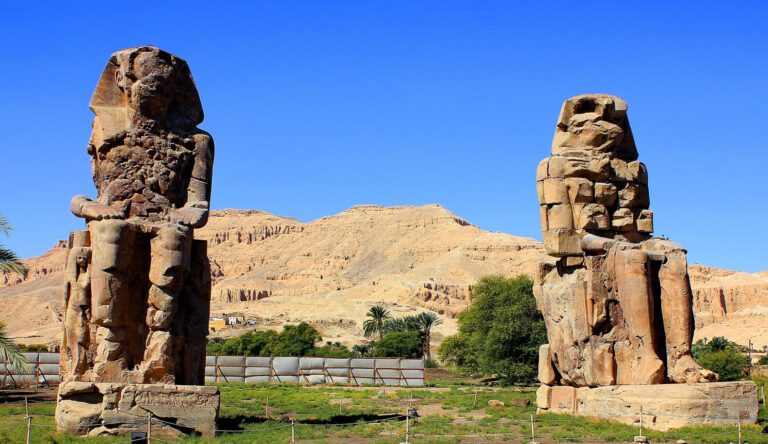• Dahabiya Nile Sailing •
Short Description: A Dahabiya Nile Cruise is the most unique, authentic, and exclusive way to experience the Nile in elegance and comfort. Dahabiyas are traditional wooden sailing boats with private cabins with ensuites, originally designed to take 19th-century travelers along the Nile in comfort. For those who want to experience culture, history, and relaxation as they pass along the Nile Valley, there is no better way than a Dahabiya cruise.
The preferred day to start this tour is Friday, but we can organize other departure dates for 2+ cabins.
If you would like to book cabins aboard the Dahabiya cruise only, this can be arranged. All our guides have a background in Egyptology, history, archeology, or guiding. They are all officially licensed guides.
Day 1 (usually Friday)
Arrive in Aswan in the morning. Visit the Philae Temple. Visit the unfinished obelisk. Visit the High Dam. Noon: check into the Dahabiya. Lunch and sailing Dinner and overnight are on board in Daraw.

We take a boat to visit Philae, giving you a picturesque approach to the site. During the 1960s, the monuments on this island were relocated from the original Philae island nearby so they would not be flooded because of the construction of the Aswan High Dam. Philae includes many structures, mostly dating to the Ptolemaic era (332–30 BC). The most prominent of these is a temple dedicated to Isis, begun by Ptolemy II Philadelphus. This temple was one of the last ancient Egyptian temples to remain active until Emperor Justinian I (527–565 AD) ordered the closure of all non-Christian temples. The temple was converted into a Christian church. There also is a temple dedicated to Hathor, built by Ptolemy VI Philometor (180–145 BC) and Emperor Augustus of Rome (30 BC–14 AD), and the elegant Kiosk of Trajan (98–117 AD).
We visit the unfinished obelisk. Obelisks are four-sided, tapered monuments that were called tekhenu by the Ancient Egyptians. The term “obelisks” comes from the Greek word “obeliskos,” the diminutive of “obelos,” which means “a spit.” There is ongoing debate about who commissioned the obelisk. It is estimated that the unfinished obelisk would have measured 42 metres and weighed 1200 tons, which would have made it the largest obelisk constructed by the ancient Egyptians.
Visit the High Dam and enjoy views of the Old Aswan Dam and the Nubian Lake (Lake Nasser). Seeing the High Dam and lake adds to your understanding of how the changing flow of the Nile has influenced Egyptian history. The dam was built to control the flooding of the Nile, increase water storage for irrigation, and generate hydroelectricity. The plan spread some controversy because the dam would flood the lands of the Nubian people and cover the remains of previous societies, including several important ancient Egyptian temples. The large area flooded, forcing the relocation of more than 100,000 people. Many archaeological sites were saved, but many others were submerged.
Around midday, we check in to the Dahabiya and enjoy lunch while we begin the sailing experience. Dinner and your first night staying on board the Dahabiya are in Daraw.
As we near Aswan, you have the opportunity to swim or kayak. If you wish to kayak, please advise us two days before the Dahabiya tour begins so we can be sure to have kayaks available.
Day 2
Breakfast is on board. In the town of Daraw, you learn how to shop like a local at the market, visit a barn to meet camels and learn about the camel trade, and visit a Nubian village. Visit the Kom Ombo temple. Lunch is on board. Sailing to El Selsela, an ancient sandstone quarry and shrines Dinner and overnight are on board near Bissaw.

In Daraw, we plan dinner for that night, and you learn how to shop Egyptian style, then try your new skills in the market shopping for ingredients for dinner. We also visit a camel barn to learn about these fascinating animals and the camel trade.
We will visit a Nubian village. From about 7,000 BC, communities evolved from African Nile Valley civilizations to form the Nubian, Ancient Egyptian and Kushite civilizations. There are several Nubian communities near Daraw. Nubian civilization is one of the oldest in the Nile River valley. Nubians are a distinct ethnolinguistic group indigenous to southern Egypt and northern Sudan, but Nubians in Egypt who were displaced by the construction of the High Dam near Aswan now mostly live north of Lake Nasser. Although Nubians are historically and culturally distinct from other Egyptians, they have long been interconnected with Egypt. While many Egyptian pharaohs colonized Nubia at various times, Nubian pharaohs from the Kingdom of Kush ruled ancient Egypt in the 7th century BC.
The Temple of Kom Ombo is dedicated to the crocodile-featured god Sobek and the god Horus. The connection to the power of the Nile is unmistakable as you look towards the temple. We also visit the Crocodile Museum, which includes some impressive mummified crocodiles.
Sail to El Selsela, where we take a short walk parallel to the Nile to visit shrines and a massive quarry. Large amounts of sandstone were quarried here for temple buildings in Thebes (Luxor). Cut into the rock are the speos (chapel) of Horemheb, with its sanctuary containing rock shrines and various stelae and inscriptions. The huge quarry gives context to how much building material was sourced from this area. There is also an area of sand here where children (and children at heart) can slide and play. Dinner and overnight on the dahabiya, where you are now becoming part of the rhythms of Nile River life.
Day 3
Breakfast in a local home or on board. Explore Bisaw Island, walk through farms, and meet the villagers. Join the men in their boats to share the experience of Nile fishing. Sail to Edfu in horse carriages to visit the Temple of Horus. Lunch is on board. Dinner and a night’s stay are on board in El Hegz.

Stepping off the dahabiya at Bisaw Island and the village, we take a leisurely walk through a farm, meet some of the women and children, and learn how the unique sun bread is baked in homes here. We are welcomed by the local fishermen to their boats, learning of the skills of these men who live in harmony with the Nile. Fish caught can be enjoyed as part of dinner that evening.
We board the dahabiya for lunch and sail towards Edfu. Horse-drawn carriages take us to the imposing temple with its grand spaces and many hieroglyphic inscriptions. View Tell Edfu to the West of the temple, which includes houses dating from the Old to New Kingdom. If time allows, we also stroll through the local market.
We sail again, time to relax with dinner, overnight on board in El Hegz. El Hegz Village. This is an opportunity for true cross-cultural exchange as we visit a local family who are excited to have visitors from the wider world. Your guide will translate so you can ask them questions and enhance your understanding of village culture.
Day 4
Breakfast is on board. Sail to Esna. Check out the dahabiya after breakfast. We visit the temple, restored caravanserai, and market. Esna is part of the Luxor governorate; we drive about an hour from Esna to Luxor. Lunch. Visit Karnak Temple. Visit the Luxor Temple. Overnight stay in a hotel in Luxor. Tour duration: 3–4 hours.

After breakfast, check out of the dahabiya. In Esna, we explore the temple dedicated to the ram-headed god Khnum. The temple sits below street level within the town, as it was excavated from layers of earth. Enjoy discovering heritage craft traditions, including beautiful textiles, as we visit the restored Wekalet Al-Geddawi, a caravanserai, and the Ottoman-era market of Al-Qissariya. Drive about an hour to Luxor.
After lunch, we visit Karnak Temple and Luxor Temple for 3 to 4 hours. On the east bank of Luxor, bookending the modern city, are the ancient Theban temples of Karnak and Luxor, with the Avenue of Sphinxes and Luxor Museum between them. Karnak Temple is huge; the site covers more than 100 hectares. Construction at Karnak began in the Middle Kingdom (2000–1700 BC) and continued into the Ptolemaic era (305–30 BC). Its size and variety within the site make it extraordinary.
We continue to Luxor Temple, located approximately three kilometers south of Karnak Temple. These temples were linked with a processional way bordered with sphinxes, now known as Avenue of the Sphinxes. As was the case with Karnak temple, unlike most other ancient Egyptian temples it is not laid out on an east‑west axis, but is oriented towards Karnak. It is the only temple in the world where ancient Egyptian religions, Greek and Roman cults, Christianity and Islam have been practiced. The temple was substantially built by Amenhotep III (c. 1390–1352 BC) and Ramesses II (1279–1213 BC).
Go to your hotel for an overnight stay.
Day 5
*Optional activity: Hot Air Balloon ride over Luxor West Bank for the sun rise. (about 50 min flying)
We will meet you at your hotel. We drive to the West Bank and stop to see the Colossi of Memnon. Visit the Valley of the Kings, where your tour guide will lead you to the most important tombs among the currently open tombs in the valley. You visit 3 tombs of the more than 10 tombs that are currently open. Visit Hatshepsut Temple.
Visit a local traditional house for lunch—an opportunity to meet local people. The lunch may include a brief cooking lesson. You also have the option to replace this with lunch at a regular restaurant. Visit the Ancient Workmen’s Village (Deir El Medina). Tour Duration: 7-8 hours Return to your hotel or transfer to the airport at the end of the tour.

Modern Luxor is the location of the ancient city of Thebes. We will visit some of the most important sites and monuments on both the east and west banks of the Nile. The West Bank of Luxor is home to countless tombs, temples, and the village of the workmen who built and applied their artistry to the tombs and temples. As we start exploring the West Bank, our first visit is to the Colossi of Memnon. These two imposing sandstone statues that indicate the site of the mortuary temple of 18th-dynasty pharaoh Amenhotep III (1386–1353 BC) were completed in 1350 BC. The statues of the seated ruler are 18 metres high, and each is estimated to weigh 720 tons. The temple is the largest on the West Bank and continues to be excavated; you can see this underway behind the statues. Archeologists believe the single sandstone blocks from which each statue was carved were quarried near Cairo and transported to Thebes.
We continue inland to the Valley of the Kings, which is part of the necropolis of ancient Thebes. This is a UNESCO World Heritage Site. For more than a thousand years, the kings, queens, and nobles of the New Kingdom (1500–1070 BC) chose to be buried here. The tombs are carved into the limestone rock of a wadi (valley), and the surrounding landscape is in itself awesome. Many of the tombs are exquisitely decorated; they show scenes of the spiritual life of the ancient Egyptians. There are so many tombs worth visiting that today’s visit to three will hopefully encourage you to return to visit more of the Valley of the Kings with Real Tours.
We move next to the temple of Hatshepsut. During her reign, the female pharaoh Hatshepsut (1473–1458 BC) built a mortuary temple at Deir el Bahari, situated directly across the Nile from Karnak Temple, which was the main sanctuary of the god Amun. Many find it one of the most beautiful of all the temples constructed in Egypt. Hatshepsut clearly realised that, as a woman in what was usually a male power role, impressive structures that bettered those of previous rulers would help to impress people and legitimise her reign.
Our last fascinating site today is the ancient workmen’s village. Deir el–Medina is the Arabic name for the village where the craftsmen and artisans who worked on the tombs and other monuments of the West Bank lived, including those in the Valley of the Kings and the Valley of the Queens. It is an important site due to the abundant information it has given about the daily life of those who lived here. At Deir el-Medina, the lives of the workers responsible for the magnificent tombs were coming to light.
Return to your hotel at the end of your tour.
| Dahabiya Tour Detailed Quote |
|---|
| USD 705 Per Person in Double Cabin |
|
| USD 250 Per Suite Per 3 Nights |
|
| USD 540 Per Person Per Cabin |
|
| NOT INCLUDING |
|
| NOTES |
|
© Dahabiya Nile Sailing Egypt 2024